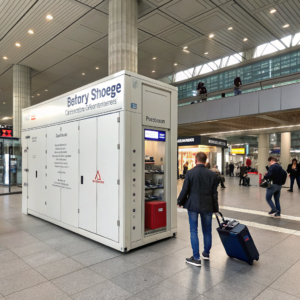Back Contact Solar Cells: Advancing Photovoltaic Efficiency
•
Why are leading solar manufacturers shifting to back contact cell designs? These innovative architectures eliminate front-side shading to maximize light absorption and boost performance.
Back contact solar cells relocate all electrical contacts to the rear surface, increasing efficiency by 5-15% compared to conventional designs by eliminating front-side shading losses.
The transition to back contact technology represents one of the most significant architectural advancements in photovoltaic design, offering both efficiency gains and aesthetic improvements for modern solar installations.
Understanding IBC and MWT Back Contact Technologies
What's the difference between the two main back contact approaches? Interdigitated Back Contact (IBC) and Metal Wrap Through (MWT) each solve the shading problem differently.
IBC cells completely eliminate front metallization by creating alternating p/n regions on the rear, while MWT cells use laser-drilled holes to "wrap" front contacts to the back, both reducing shading losses.
Back Contact Technology Breakdown
-
Interdigitated Back Contact (IBC)
- No front-side metallization = maximum light capture
- Complex manufacturing process (15-20 steps)
- Highest efficiency potential (24-26%)
- Used by SunPower, Trina Solar
-
Metal Wrap Through (MWT) Feature Advantage Laser-drilled vias Simpler than IBC Partial front contacts Lower cost than IBC Efficiency 21-23% typical -
Performance Comparison Metric Conventional MWT IBC Efficiency 18-21% 21-23% 24-26% Shading Loss 3-5% 1-2% 0% Cost/Watt $0.30 $0.35 $0.45
"IBC technology currently holds the world record for silicon solar cell efficiency at 26.7%, demonstrating the ultimate potential of back contact designs" - Fraunhofer ISE
Benefits and Manufacturing Challenges of Back Contact Cells
Why aren't all solar panels using back contact designs if they're more efficient? The production complexities create significant cost and scalability hurdles.
Back contact cells offer 5-15% higher efficiency and better aesthetics, but require advanced manufacturing techniques that increase production costs by 20-50% compared to standard cells.
Advantages vs. Production Challenges
-
Key Benefits
- Higher efficiency (reduced shading & recombination)
- More uniform black appearance (especially IBC)
- Better temperature coefficients
- Lower degradation rates
-
Manufacturing Hurdles
- Precision alignment requirements (±5μm tolerance)
- Additional process steps (laser drilling, backside patterning)
- Lower throughput than standard cells
- Higher material costs (special pastes, carriers)
-
Cost-Performance Tradeoff Technology Efficiency Gain Cost Increase Payback Period Standard PERC Baseline Baseline Baseline MWT +5-8% +15-20% 3-5 years IBC +10-15% +30-50% 5-8 years
Current Adoption: Primarily in premium residential and commercial markets where space constraints justify higher costs, with expanding utility-scale applications as costs decline.
Future Trends: Full Rear Contact with Passivation Layers
What's next for back contact solar technology? The integration of advanced passivation layers promises to push efficiencies even higher.
Next-generation back contact cells combine rear contact designs with TOPCon and heterojunction passivation layers, potentially reaching 28% efficiency while improving manufacturability.
Emerging Back Contact Innovations
-
TBC (Tunnel Back Contact)
- Combines IBC with TOPCon passivation
- Potential for 26-28% efficiency
- Simplified patterning process
-
HJT-IBC Hybrids
- Heterojunction amorphous silicon layers
- Excellent surface passivation
- Temperature-resistant performance
-
Manufacturing Advancements Innovation Impact Laser transfer printing Faster metallization Self-aligned processes Reduced tolerance requirements Plated contacts Lower silver usage -
Market Projections
- 35% of premium market by 2025
- 15% cost reduction/year through 2027
- Potential for <$0.40/W by 2030
Industry Outlook: Back contact designs are projected to capture 25% of the global solar market by 2030 as manufacturing costs decline and efficiency advantages become more compelling.
Conclusion
Back contact solar cell technology represents the future of high-efficiency photovoltaics, with ongoing innovations steadily overcoming manufacturing challenges to deliver superior performance across all market segments.








